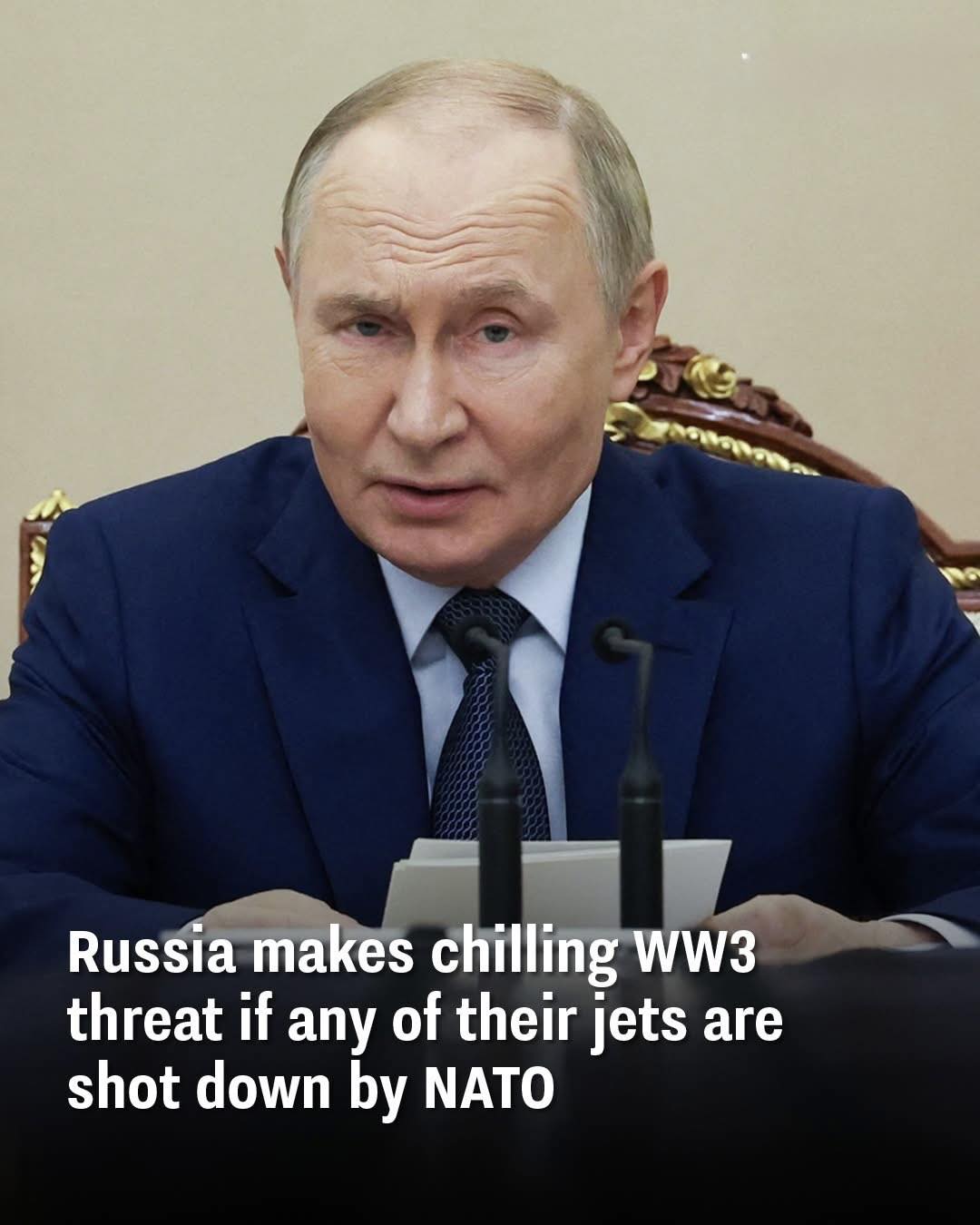Tensions between Russia and NATO have escalated once again after Moscow issued a stark warning that any attempt to shoot down its fighter jets could amount to a declaration of war. The threat underscores how fragile the situation has become as both sides trade accusations of airspace violations and hostile maneuvers.
The Estonia Incident
The latest crisis began when Estonia accused Russia of repeatedly breaching its airspace. According to Tallinn, a formation of three Russian MiG-31 fighter jets entered Estonian airspace for about 12 minutes — the fourth such violation this year.
Estonia’s Foreign Minister Margus Tsahkna condemned the incursion in unusually strong terms.
“Russia has violated Estonian airspace four times already this year, which is unacceptable in itself,” Tsahkna said. “But today’s violation, during which three fighter jets entered our airspace, is unprecedentedly brazen. Russia’s ever-increasing testing of borders and aggressiveness must be responded to by rapidly strengthening political and economic pressure.”
Moscow quickly denied the accusation, insisting that the jets were operating legally in international airspace over the Baltic Sea.
Poland Raises the Alarm
Only days after Estonia’s protest, Poland also reported hostile Russian activity. Prime Minister Donald Tusk confirmed that “a huge number” of Russian drones crossed into Polish territory overnight.
“Our airspace was violated by a massive number of Russian drones,” Tusk explained. “Those drones that posed a direct threat were shot down. I am in constant communication with the secretary general of NATO and our allies.”
The incursions prompted Warsaw to request consultations under NATO’s Article 4, which requires allies to meet whenever a member believes its security or territorial integrity is threatened. While not the same as Article 5 — the alliance’s mutual defense clause — the step signals growing unease across Europe about Russia’s intentions.
Trump’s Response
As the reports spread, President Donald Trump weighed in, urging NATO countries to take tougher measures.
Asked by a reporter whether member states should shoot down Russian jets if they again enter NATO airspace, Trump replied bluntly: “Yes, I do.”
His remarks placed additional pressure on an already combustible situation, essentially endorsing direct military confrontation if violations continue.
Russia’s Chilling Warning
Moscow’s response was swift. Russia’s ambassador to France, Alexey Meshkov, warned that downing a Russian jet would cross a dangerous line.
“If NATO countries shoot down our aircraft, it would be war,” Meshkov told French media. “You know, there are many NATO aircraft that violate Russian airspace — it happens quite often. Afterwards, they are not shot down.”
The ambassador’s comments highlight Russia’s view that the West is guilty of similar provocations and that any attempt to strike a Russian military plane would be treated as an act of open hostility.
A Spreading Conflict
Ukrainian President Volodymyr Zelenskyy also issued a stark warning at the United Nations headquarters, arguing that Russia’s aggression would not remain contained within Ukraine.
“Putin will keep driving the war forward, wider and deeper,” Zelenskyy said. “We told you before: Ukraine is only the first. Now, Russian drones are already flying across Europe, and Russian operations are already spreading across countries. Putin wants to continue this war by expanding it, and no one can feel safe right now.”
His words were aimed squarely at Western leaders who may still hope to limit the conflict. The recent drone and fighter jet incidents appear to bolster Zelenskyy’s claims that Russia is testing NATO’s resolve beyond the battlefield in Ukraine.
What NATO Faces Next
The prospect of direct military confrontation between NATO and Russia has long been one of the West’s worst-case scenarios. While Article 5 commits members to collective defense, it has never been invoked against a nuclear power. Any clash in the skies over Europe would carry the risk of rapid escalation.
For NATO, the challenge is striking a balance between deterrence and restraint. Responding too weakly could embolden Russia to push further, while responding too strongly could tip the conflict into all-out war.
A Dangerous Game of Nerves
Military analysts note that airspace violations are not new. Throughout the Cold War, both NATO and Soviet aircraft regularly tested each other’s borders. What makes the current situation more dangerous is the ongoing war in Ukraine and the heated rhetoric surrounding it.
With drones crashing into Polish territory, jets crossing Estonian skies, and leaders trading fiery warnings, the line between posturing and actual conflict has become dangerously thin.
Global Reactions
The international community is watching closely. European allies have expressed solidarity with Estonia and Poland, but there is also a clear reluctance to take steps that might provoke direct military confrontation.
At the same time, NATO leaders are under pressure from their own citizens to ensure that their countries are not dragged into a wider war. The risk of miscalculation — a drone shot down in the wrong place, or a pilot misreading radar signals — has rarely been higher.
Conclusion
Russia’s latest warning — that shooting down its jets would amount to war — underscores how precarious the standoff between Moscow and NATO has become. What began as alleged airspace violations is now entangled with threats of global conflict.
With both sides unwilling to appear weak, the danger lies not just in deliberate escalation but in the possibility of an accident spiraling out of control. For now, Europe and the world are left holding their breath, watching the skies, and hoping that diplomacy can step in before warplanes do.
